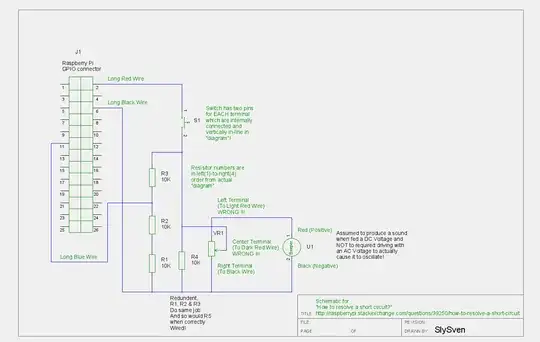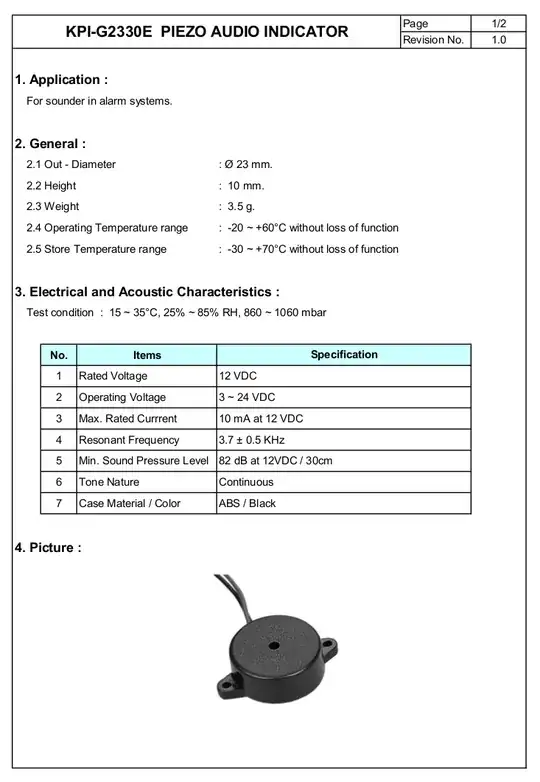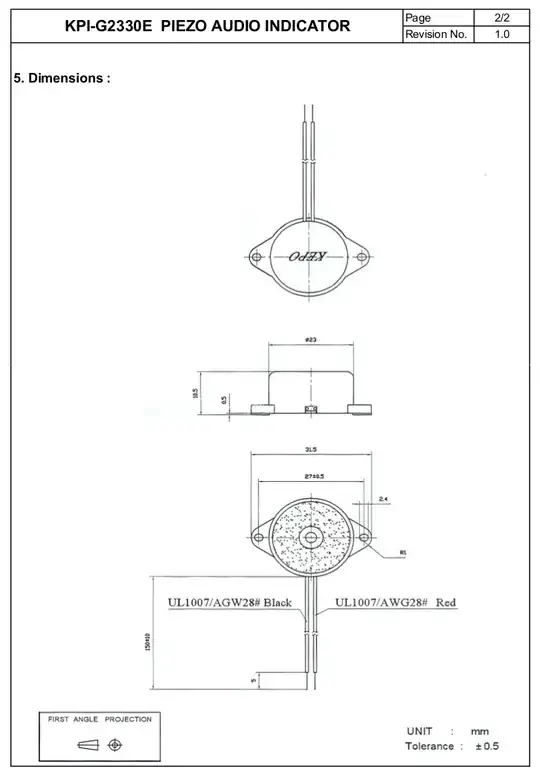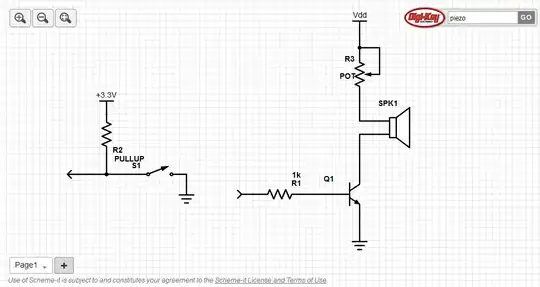If you consider the circuit diagram I ran up (with gschem - part of the GPLed Electronics Design Automation project):

Can you see how the Potentiometer has the two Red wires in the wrong place (swap them to fix it) so that if the wiper (which SHOULD be connected to the Red wire of the Buzzer I believe) is at the bottom of its travel (near the Black wire electrically speaking, then, when the switch is pressed, it SHORTS out the 5V supply to ground.
Also, R4 is redundant as the circuit seems to be - its effects are entirely repeated by R1-3!
Also, this is only going to work so that the buzzer makes a sound when the button is pressed, if the buzzer is a device that accepts a DC voltage as a power supply and uses that to power an internal oscillator to drive the sound producing element inside. Not all "sounders" work like that, some need to be driven with an AC voltage (they do NOT have an internal oscillator circuit, they need an external one). If the buzzer is a device that takes a DC voltage and makes its own sound, then feeding the supply via a variable resistor as a potential divider is a poor design - for a good rule of thumb the amount of current that can be taken out of the middle of the divider (the wiper contact on a potentiometer) should be no more than say a fifth or better no more than a tenth of the current following from top to bottom.
A better arrangement would be to disconnect the black wire from the bottom of the variable resistor altogether and then the existing mis-wiring of the other two connections to the variable resistor is not important, so that the nearer the wiper gets to the connected end the more current/voltage/power gets through into the buzzer (and less gets lost in the variable resistor) and it should get louder as expected, depending on the relative resistances that the buzzer and the variable resistor have, you will only get any sound from the buzzer when the wiper is pretty much towards the connected end.




